TRAINING TO ATTAIN your target physique is more complicated than just hoisting some weights, flexing in the mirror, and praying for muscle growth. That’s even more relevant once you’ve advanced beyond the basics of muscle building and graduated from newbie gains status. You’ve put focused attention on your arms, followed the gym commandment to never skip leg day, and your abs circuits are more sophisticated than just a series of situps. The next step in your gym journey: dialing in on muscle definition. And one of the first spots that guys identify as a need-to-address area is the inner chest.
An ‘aesthetic’ chest is more than just mass, after all. While lots of guys are striving to fill out the tops of their t-shirts, they also begin to consider what exactly they’re working with once they take that shirt off. The inner chest refers to the area between the pectoral muscles—and the goal is for that spot to pop, with lean striations, especially as you move your arms toward your midline to flex.
One catch for physique-minded guys as they set out on their inner chest training journey: You can’t isolate the area to develop it in the same way you’d train other muscles, like your biceps and triceps in your arms. The “inner chest” isn’t one distinct muscle; it’s part of the pectoral muscles as a whole. In order to train the inner chest, you need to train the whole chest. Yes, there are some exercises that you can do that will be more effective than others—in other words, you’ll be better off doing fly-style movements than set after set of bench press—but you’ll need to think less about isolation and more about focused movement.
If you combine those moves with a well-balanced routine and a smart diet (which is really one the most essential steps for any aesthetically-focused fitness goal), you can build the powerful-looking inner chest you’ve envisioned.
How to Build Your Inner Chest Muscle
In geek speak, every sarcomere of muscle fibril will contract with each rep of these chest-focused exercises. But you can put added emphasis on your inner chest with the right exercises.
Barbell and straight dumbbell presses don’t emphasize the fibers nearest your breastbone. That’s because one of the functions of the pectorals is to bring your arms toward the midline of the body—this is referred to as adduction or convergence; picture hugging a big Redwood tree—and this function isn’t required during a regular bench press, straight up-and-down movement. Another key for muscle growth and definition is the mind-muscle connection. This means that you’re able to feel the muscle work through its full range of motion, rather than focusing purely on moving big weights.
So, to really hit the inner part of your pecs, you need to perform exercises where the arms don’t just extend out in front of you, but where they come together (or even cross) the midline of the body. Pushing big numbers shouldn’t be your ultimate aim either, so you can establish the mind-muscle connection—proper form and constant focus on the chest contraction (squeezing your chest) should be the goal.
Benefits of Training the Inner Chest
- Muscle size
- Muscle definition
- Strength
Along with the aesthetic benefits of adding definition and size to your chest muscles, targeting your inner chest will help you build strength. The types of movements that help to hit the inner chest will be valuable for your heavy pressing movements, like the bench press. The adduction you’ll hone with fly-style movements will help you to push more weight with those types of exercises.
The Best Inner Chest Exercises
T-Bench Fly
The fly takes that essential movement we’ve already highlighted—adduction—and adds resistance. But while the standard dumbbell chest fly is a solid option (you’ll notice it listed below, after all) the exercise does have its downsides. This variation helps to alleviate those problems while also allowing you to use heavier weights while keeping your joints safe, which should pay off with greater gains.
How to Do It:
- Set up on a flat weight bench, holding a pair of dumbbells and resting your shoulders on the pad to form a ‘T’ shape.
- Drive your shoulders into the bench, then squeeze your glutes and abs to lift your torso up. Your body should form a straight line from shoulders to knees with your feet flat on the ground. Press the dumbbells straight up, then shift them to a neutral position (palms facing each other).
- Open up your elbows to lower the weight down, taking 3 to 4 seconds. You can pause briefly on the bench.
- Squeeze your chest to fly the weights back up to the starting position.
Cable Fly
This is potentially the number one most common chest-building exercise after the bench press—and it’s a sure-fire method for training that adduction essential for inner chest muscle development. You’ll need a tall cable machine for this exercise, or at the very least a double resistance band setup.
How to Do It:
- Set the cables at a height just above your shoulders. Grab the cable handles with the base of your palm, and set up with your feet slightly staggered and facing forward. Squeeze your glutes and abs and square your hips forward.
- Squeeze your shoulders to bring the cables into position.
- Squeeze your chest to bring your elbows together as if you’re hugging a tree, but pause with your hands directly in front of your torso. Rotate your hands slightly upward as they approach your midline, so that your pinky fingers are close parallel.
- Emphasize the chest squeeze. After a count, reverse the movement, keeping control of the cables.
Bear Plank Chest Press
Flip your press to chisel your pecs with this tough cable machine or banded exercise. You’ll create a ton of tension using your abs, lower back muscles, and glutes to remain stable—then carve out your pecs with the presses.
How to Do It:
- Set up in a bear plank position, holding the cable handles or bands.
- Keep your hips and shoulders square to the ground, then shift one arm back to your torso.
- Pause, then press down to the ground, keeping your back flat and body square.
Dumbbell Chest Fly
Flys are the most basic exercise for that arms to midline motion, and you’re most likely familiar with this variation of the movement. In order to maximize the effect on the inner chest, there are a few things to keep in mind.
How to Do It:
- First, make sure to take a strong position on the bench—that means your shoulders are dialed in, your core and glutes are engaged, and your feet are securely on the floor.
- Press the dumbbells straight up. The most important part of the fly is the top of the lift, with the dumbbells raised above your chest.
- Lower the weights down to either side maintaining a slight elbow bend, keeping your shoulders engaged on the bench and only moving at the shoulder joint. Only descend until you feel a stretch to your chest muscles.
- Squeeze your chest to fly the weight back up to the starting position. Rather than touching the bells at the top, keep some space between them and instead focus on squeezing your pecs as much as you can beyond what it takes to lift the weight.
Ground Pound Alternating Press
This challenging finisher forces you to keep your torso in the proper position in order to keep the focus on the chest. You’ll need a pair of resistance bands or a cable machine setup, so this is an exercise best performed at a gym.
How to Do It:
- Set up in a tall-kneeling position inside a set of cables or resistance bands. Grab a cable or band in each hand, then hinge forward.
- Press one arm down to the ground. Keep your core and glutes engaged to stay balanced.
- Press your other arm down to the ground. Squeeze your chest, then retract both arms back to the start.
Like the fly above, the most important part of this exercise for inner chest development is the squeeze once your arms are extended. Consider holding and squeezing for an extra few counts once you press both of your arms together. As an added bonus, you’ll be torching your core, too.
Squeeze Press
This content is imported from youTube. You may be able to find the same content in another format, or you may be able to find more information, at their web site.
The squeeze press is similar to a dumbbell bench press with one slight tweak: the dumbbells are kept in contact with each other throughout. Sometimes called the Hex Press (likely because the move is easiest to perform with hex dumbbells), you should squeeze the dumbbells together as hard as possible during every inch of every single rep, keeping tension on the inner chest.
How to Do It:
- Lie back on the bench as you would for a dumbbell bench press.
- Squeeze the weights together on your chest. As noted above, it helps if they’re hex-style weights.
- Press the weight straight up, maintaining the squeeze.
- Return to the start.
Dumbbell Fly with Band Resistance
This content is imported from youTube. You may be able to find the same content in another format, or you may be able to find more information, at their web site.
Bands allow for accommodating resistance through the entire range of motion, matching your strength curve. In other words, the bands are most resistant when you’re at your strongest (when the band is fully lengthened at the peak of a dumbbell fly, when you’re near full extension), keeping tension on your inner chest at the top of the rep when normally you wouldn’t feel it.
How to Do It:
- Lie flat on the bench with the mini band attached behind its back and wrapped at the thumb, then perform flies as you normally would.
- If you struggle to “feel” your chest working (and are naturally tricep dominant on chest movements) try using bands to increase the mind-muscle connection.
Plate Squeeze Press
All you need is a weight plate to get a good squeeze.
How to Do It:
- Grab a 10 to 45 pound weight plate and squeeze it with an open palm in the center while pressing upwards. You may want to hook your fingers in the hole if it’s a metal plate you tend to have sweaty palms.
- Performing this movement with slow, controlled pacing is key. It’s best to shoot for high reps and keep your pecs flexed throughout.
Single-Arm Chest Fly
You might be used to using dumbbells for flys, but cables or resistance bands can serve a slightly different purpose.
“This exercise can be an extremely effective single arm exercise increasing hypertrophy, muscular endurance (providing that pump) without putting the amount of stress on the shoulder joints that a chest fly with a dumbbell would,” adds performance specialist and coach Curtis Shannon, C.S.C.S.
This version of the movement is performed unilaterally (one side at a time), with an emphasis on the upper-inner pec region. However, emphasis is placed on bringing the resistance further across the body and past the midline, thus extending the range of motion to force an intense peak contraction in the inner pec.
Here, the single-arm fly is paired with a single-arm bench press to pile on even more volume.
How to Do It:
- Start by performing a series of single-arm dumbbell bench presses.
- Immediately shift to the cable or resistance band setup. Grab the band or handle and assume a tall-kneeling position, keeping your glutes and abs engaged and shoulders squeezed to create tension.
- Squeeze your chest to bring your arm to the midline of your torso. Pause for five seconds for the first rep, the four for the next (and so on).
- After the countdown reps, perform five to seven standard fly reps.
- Repeat on the other arm.
Stance Switch Kneeling Fly
Mix up your single-arm fly work by taking a knee and adding some more movement and core-challenging elements. Your lower chest and obliques will reap the rewards of your work, too.
How to Do It:
- Start in a half-kneeling position with a cable machine or resistance band anchored slightly above your shoulder.
- Grip the handle and squeeze your chest to perform a fly rep, holding in position with your hand at belly-button height in front of your chest.
- Tighten your core and shift your leg back so that you’re in a tall-kneeling position, pause, then shift back into the starting position.
- Resist the rotational force with your pecs and core to keep your shoulders and chest square throughout the movement.
Inner Pec Push Up
Yes, you’re pressing here, but this bodyweight variation can still serve in a pinch.
How to Do It:
- Take a narrower pushup stance than you normally would, similar to a close-grip pushup.
- Contract your pecs together and hold that squeeze.
- Keep flexing the inner pecs as you lower down and then return to the starting position with a forceful contraction.
Cross Body Pushup with Band
Finally, you’re going to hit the ground for another push up variation using a band, courtesy of trainer extraordinaire Jeff Cavaliere, MSPT, CSCS. You aren’t just doing the pressing portion of the exercise—you’re also adding in the all-important cross-body movement mentioned above.
How to Do It:
- With a band in one hand, perform what appears to be a normal pushup.
- However, when you get to the top of the rep pick up your hand with the band in it and cross it over the other until you can put it flat on the ground on the opposite side. This will briefly provide an incredibly strong contraction of the chest.
- Pick up the hand and return it to the starting position.
Mitch Calvert, CPT, is a body transformation coach for men, having helped more than 350 guys transform across the globe. He discovered his spark for fitness when he tipped the scales at 260 pounds 14 years ago – and now works specifically with men like his former self who have weight to lose and confidence to gain. Get Mitch’s 2-page “” to simplify your diet and drop stubborn fat.
Brett Williams, a fitness editor at Men’s Health, is a NASM-CPT certified trainer and former pro football player and tech reporter who splits his workout time between strength and conditioning training, martial arts, and running. You can find his work elsewhere at Mashable, Thrillist, and other outlets.



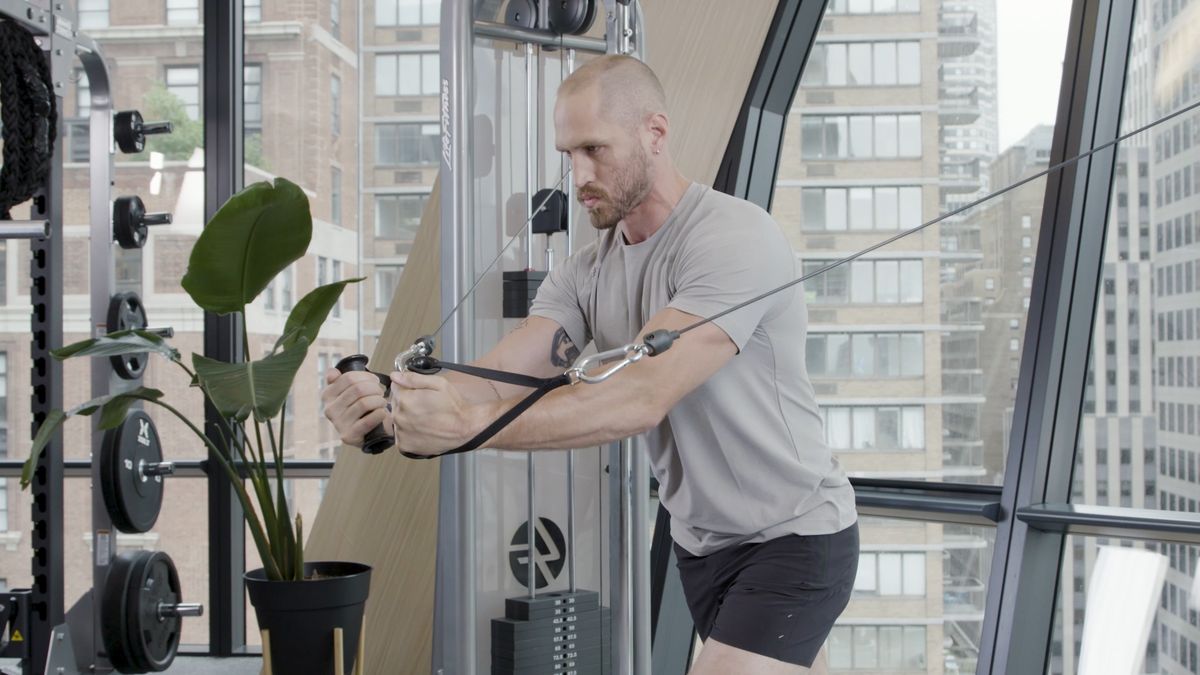
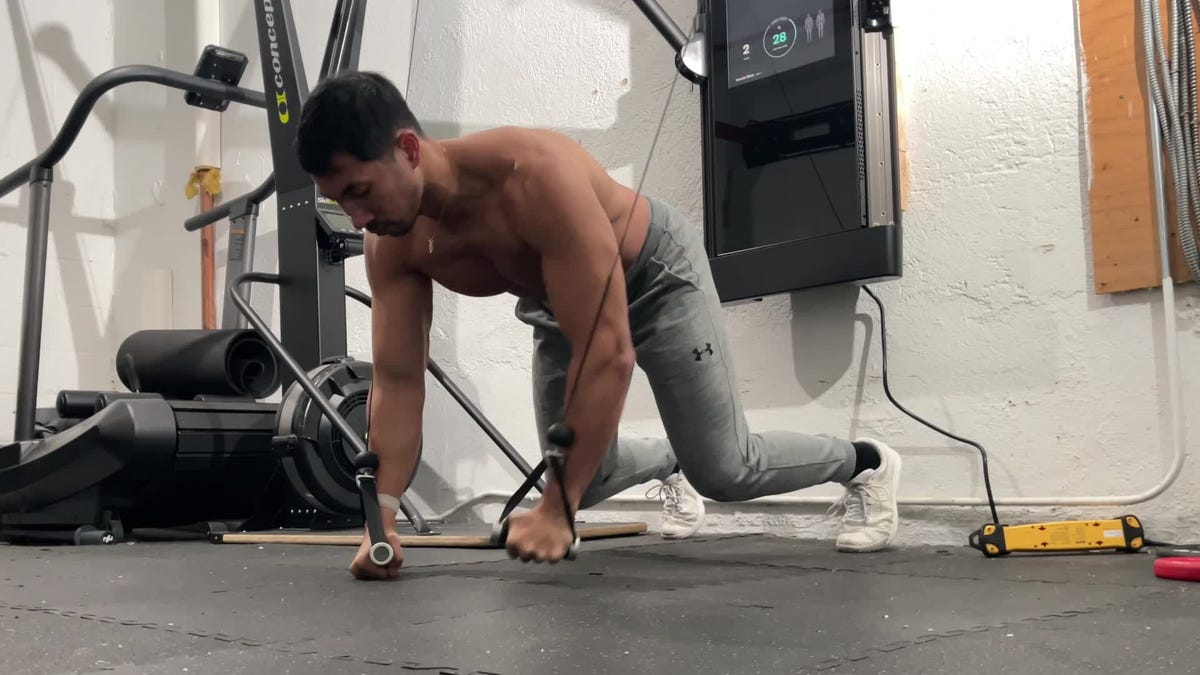


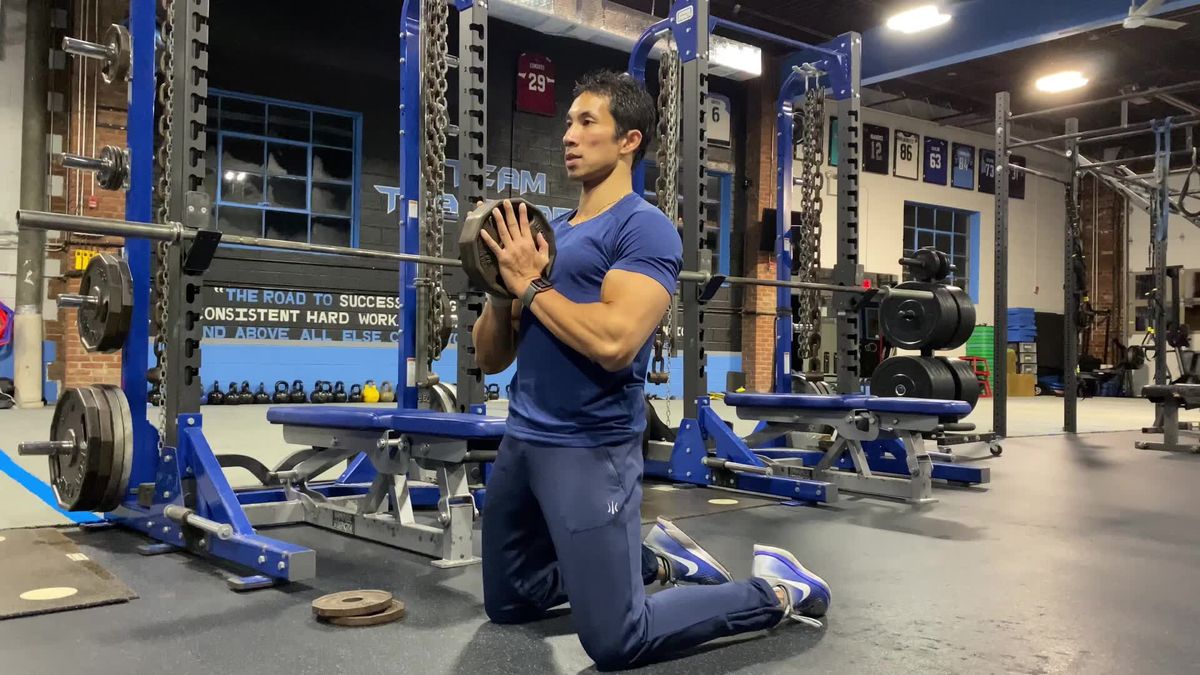
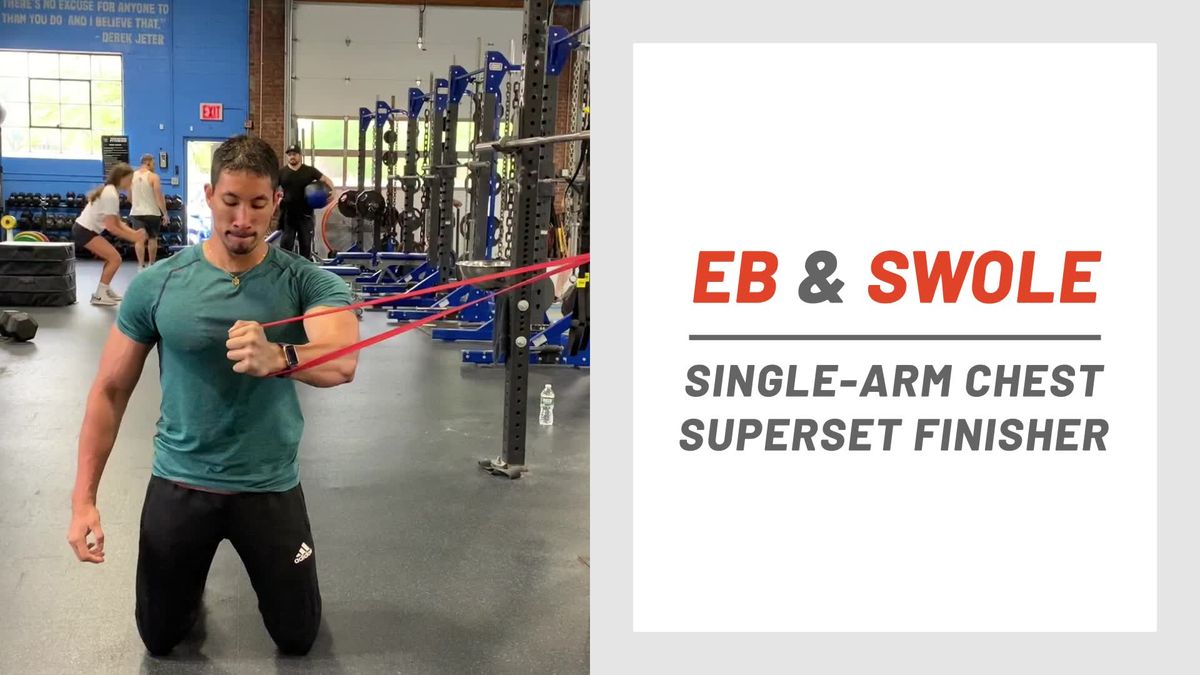
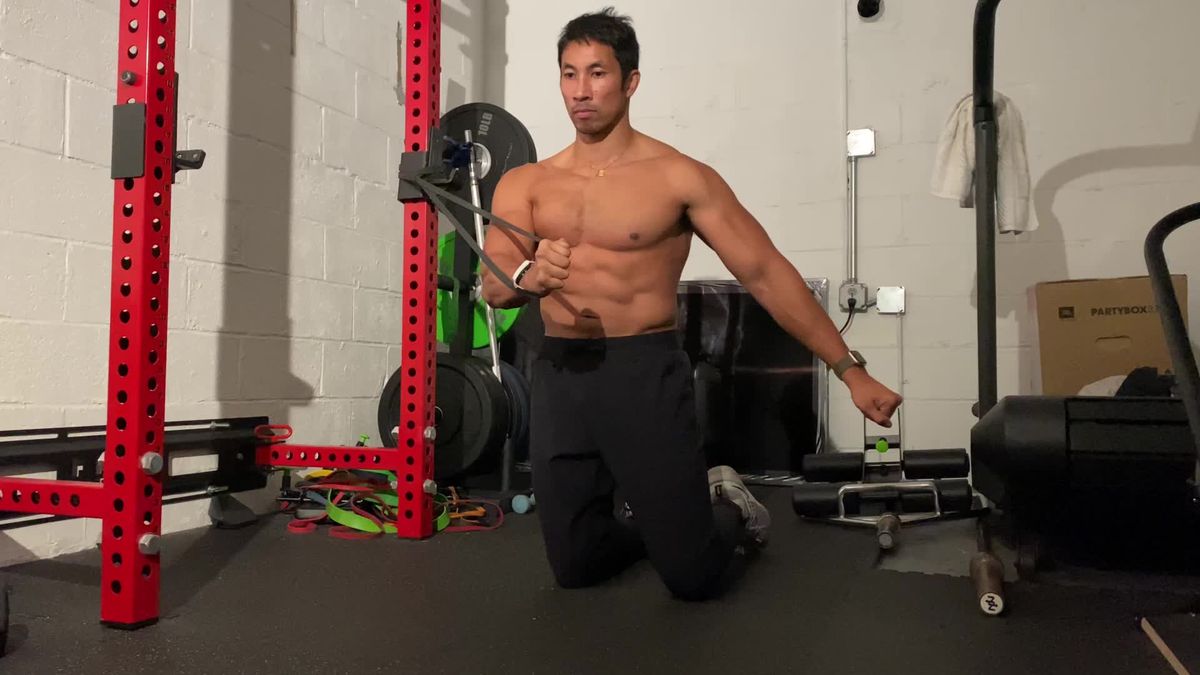
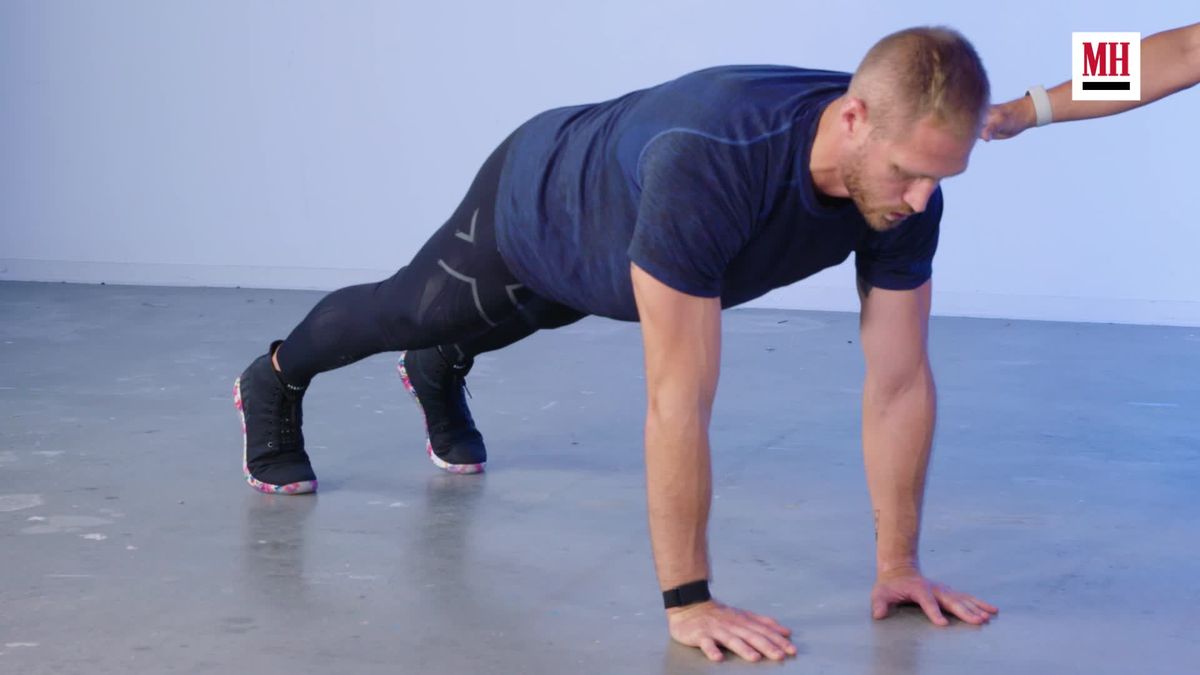
Comments are closed.